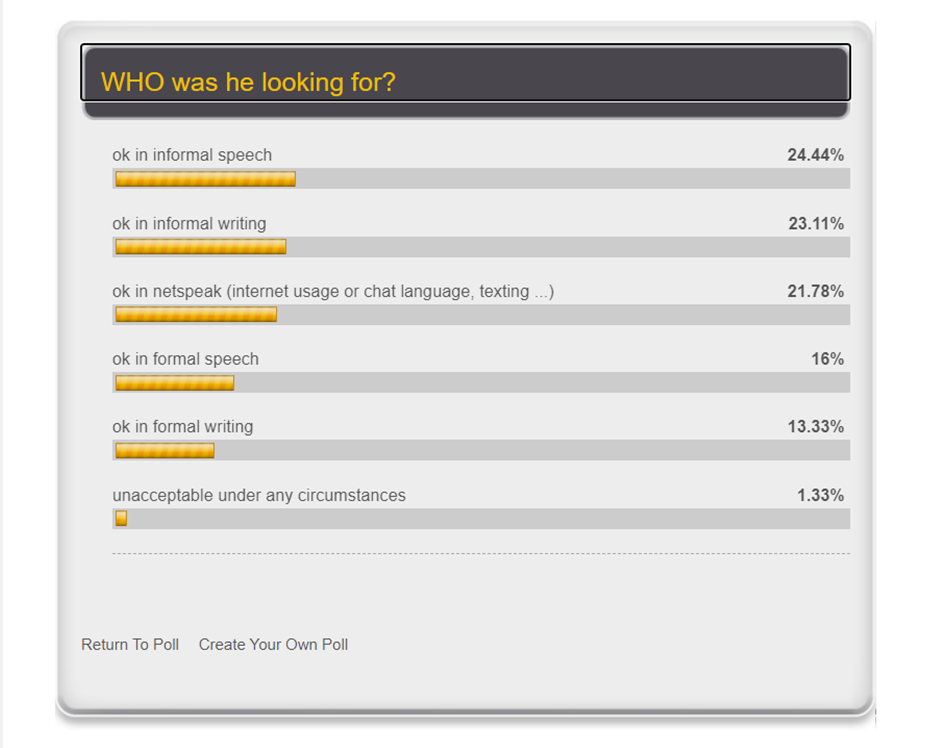Just out, I wrote earlier today, New Horizons in Prescriptivism Research, and in it there is an article I wrote on the exploitation of who/whom as a usage problem in popular culture: television series, films, popular novels. And here is another one, with as many as two references to the issue in Richard Osman’s novel The Thursday Murder Club (2020), once in the main text (“Who did what to who? Or is it, Whom did what to who? Either way …”, p. 237) and the second time in the Acknowledgements (a jab at the author’s copy-editor about correcting who/whom errors, p. 381). What is it with the who/whom issue? Is it a particular but within popular culture because people are insecure about what it should be? I’d have thought that nobody could be bothered about it any more, because our usage poll shows that who for whom is barely considered unacceptable any more. So what is going on here? (If you want to read more about the who/whom issue, have a look at my newly published paper.)
To be fair, there is one other usage problem in the book, on the use of me for I, which one of the characters, a sloppy police constable, is corrected for, five pages down from the who/whom comment (p. 242). Why only there? Or was the author havng it out with his copy-editor?

